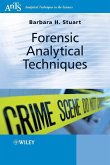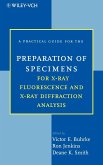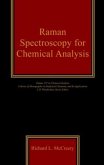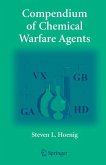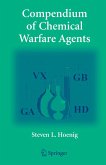Karolin K Kroening, Renee N Easter, Douglas D Richardson, Stuart A Willison, Joseph A Caruso
Analysis of Chemical Warfare Degradation Products
Karolin K Kroening, Renee N Easter, Douglas D Richardson, Stuart A Willison, Joseph A Caruso
Analysis of Chemical Warfare Degradation Products
- Gebundenes Buch
- Merkliste
- Auf die Merkliste
- Bewerten Bewerten
- Teilen
- Produkt teilen
- Produkterinnerung
- Produkterinnerung
This book describes nerve agents and vesicants, their decomposition and their degradation products' chemistry as well as their toxicity including a list of detection techniques of nerve agents and their degradation products. This book will present their history, toxicity, comparison between different sample preparation methods, separation techniques, and detection methods all together in a short, easy to read book, tied together by a single group doing the writing and the editing to assure smooth transition from chapter to chapter, with sufficient Tables and literature references for the…mehr
Andere Kunden interessierten sich auch für
![Forensic Analytical Techniques Forensic Analytical Techniques]() Barbara B. StuartForensic Analytical Techniques81,99 €
Barbara B. StuartForensic Analytical Techniques81,99 €![Validierung in der Analytik Validierung in der Analytik]() Stavros KromidasValidierung in der Analytik52,90 €
Stavros KromidasValidierung in der Analytik52,90 €![A Practical Guide for the Preparation of Specimens for X-Ray Fluorescence and X-Ray Diffraction Analysis A Practical Guide for the Preparation of Specimens for X-Ray Fluorescence and X-Ray Diffraction Analysis]() Victor E. Buhrke / Ron Jenkins / Deane K. Smith (Hgg.)A Practical Guide for the Preparation of Specimens for X-Ray Fluorescence and X-Ray Diffraction Analysis281,99 €
Victor E. Buhrke / Ron Jenkins / Deane K. Smith (Hgg.)A Practical Guide for the Preparation of Specimens for X-Ray Fluorescence and X-Ray Diffraction Analysis281,99 €![Raman Spectroscopy for Chemical Analysis Raman Spectroscopy for Chemical Analysis]() Richard L. McCreeryRaman Spectroscopy for Chemical Analysis242,99 €
Richard L. McCreeryRaman Spectroscopy for Chemical Analysis242,99 €![Analytical Solid-Phase Extraction Analytical Solid-Phase Extraction]() James S. FritzAnalytical Solid-Phase Extraction202,99 €
James S. FritzAnalytical Solid-Phase Extraction202,99 €![Compendium of Chemical Warfare Agents Compendium of Chemical Warfare Agents]() Steven L. HoenigCompendium of Chemical Warfare Agents117,99 €
Steven L. HoenigCompendium of Chemical Warfare Agents117,99 €![Compendium of Chemical Warfare Agents Compendium of Chemical Warfare Agents]() Steven L. HoenigCompendium of Chemical Warfare Agents191,99 €
Steven L. HoenigCompendium of Chemical Warfare Agents191,99 €-
-
-
This book describes nerve agents and vesicants, their decomposition and their degradation products' chemistry as well as their toxicity including a list of detection techniques of nerve agents and their degradation products. This book will present their history, toxicity, comparison between different sample preparation methods, separation techniques, and detection methods all together in a short, easy to read book, tied together by a single group doing the writing and the editing to assure smooth transition from chapter to chapter, with sufficient Tables and literature references for the reader who looks to further detail.The text will illustrate the pluses and minuses of the various techniques with sufficient references for the reader to obtain extensive detail.
Produktdetails
- Produktdetails
- Verlag: John Wiley & Sons / Wiley
- Seitenzahl: 160
- Erscheinungstermin: 18. April 2011
- Englisch
- Abmessung: 244mm x 161mm x 15mm
- Gewicht: 371g
- ISBN-13: 9780470745878
- ISBN-10: 0470745878
- Artikelnr.: 33382163
- Verlag: John Wiley & Sons / Wiley
- Seitenzahl: 160
- Erscheinungstermin: 18. April 2011
- Englisch
- Abmessung: 244mm x 161mm x 15mm
- Gewicht: 371g
- ISBN-13: 9780470745878
- ISBN-10: 0470745878
- Artikelnr.: 33382163
Karolin K. Kroening, Ph.D. University of Cincinnati, Cincinnati, OH, USA Karolin received her Master's degree in 2006 from the University of Bologna, Italy, for research based on hydroxyapatite/chitosan composites for bone substitution. At the University of Cincinnati her research focused on the identification and cytotoxicity of chemical warfare agent degradation products and protein phosphorylation studies on cerebral spinal fluid, a study that may help in the development of drugs for patients diseased with a hemorrhagic stroke. She obtained her Ph.D. in December 2010 and is currently working for Procter and Gamble in Cincinnati, OH. Renee N. Easter, University of Cincinnati, Cincinnati, OH, USA Renee Easter earned a B.S. from Xavier University, Cincinnati, in 2007 and is currently pursuing a Ph.D. in Analytical Chemistry from the University of Cincinnati. Her research has focused on metallomics approaches to identifying proteins associated with cerebral vasospasm, as well as using internal tags, such as sulfur and phosphorus for identification and quantification of oligonucleotides for siRNA drug applications. Douglas D. Richardson, Ph.D., Merck Research Labs, Rahway, NJ, USA Doug earned his B.S. in Forensic Chemistry with a minor in Biological Sciences from Ohio University in 2003. Following graduation Doug pursued his Ph.D. in the laboratory of Joseph A. Caruso at The University of Cincinnati. His research centered around advancements in elemental speciation, coupling a variety of separation techniques with element specific detection. This research was the first to utilize chromatographic techniques with inductively coupled plasma mass spectrometry for the analysis of nerve agent degradation products. In 2007, Doug defended his dissertation, earning his Ph.D. in Analytical Chemistry. Doug currently supports the development of novel pharmaceuticals within Merck Research Labs. Stuart Willison, Ph.D., National Homeland Security Research Center at the US, Environmental Protection Agency, Cincinnati, OH, USA Stuart Willison received his Ph.D. in Chemistry from the University of Cincinnati. He is currently working for the National Homeland Security Research Center at the US Environmental Protection Agency in Cincinnati, OH. His work involves environmental restoration following homeland security events, such as providing support in the detection, response to, and remediation of an area from a terrorist attack or an environmental disaster. Research areas include water protection and indoor/outdoor decontamination as well as method development of chemical warfare agent degradation products in various environmental matrices. Joseph A. Caruso, Professor, University of Cincinnati, Cincinnati, OH, USA Joe Caruso holds a Ph.D. from Michigan State University. After a one-year postdoctoral fellowship at The University of Texas - Austin, he joined the University of Cincinnati Chemistry faculty and since then he has authored or co-authored 380 scientific publications and presented more than 325 invited lectures at universities, scientific meetings, government and industry laboratories. His current research interests are in: metallomics studies involving transgenic plants and their phytoremediation mechanisms or enhancements; evaluating cell signaling changes through phospho- or metallo-proteomes as biomarkers in the CSF of certain stroke patients; investigating the metalloproteomes associated with viruses and their effect on viral capsid stability; and the effects on cell signaling changes when arsenic toxified cells are given selenium species as part of the nutrient mix. Joe Caruso is a member of the American Chemical Society, Society for Applied Spectroscopy and a Fellow of the Royal Society of Chemistry (RSC). He is Chair of the RSC Metallomics Editorial Board. He has been honored many times including the 2000 Spectrochemical Analysis Award given by the Analytical Division of the American Chemical Society, the University of Cincinnati - Excellence in Doctoral Student Mentoring Award in 2006, and in 2007 he received the Rieveschl Award for Distinguished Scientific Research. His most recent award was to be elected Fellow of the Society of Applied Spectroscopy.
Preface. 1 Historical Milieu. 1.1 Organophosphorus Nerve Agents. 1.2
Blister Agents. 1.3 Sternutator Agents. 1.4 Chemical Weapons Convention
(CWC). 1.4.1 Schedule of Chemicals. 1.4.2 Destruction of Chemical Weapons.
References. 2 Toxicity of Chemical Warfare Agents and their Degradation
Products. 2.1 Organophosphorus Nerve Agent Toxicity. 2.1.1 Toxicity
Mechanism - Acetylcholinesterase Inhibition. 2.1.2 Exposure. 2.1.3
Response, Treatment and Prevention. 2.2 Toxicity of Nerve Agent Degradation
Products. 2.2.1 Toxicity of GA (Tabun) Degradation Products. 2.2.2 Toxicity
of GB (Sarin) Degradation Products. 2.2.3 Toxicity of GD (Soman)
Degradation Products. 2.2.4 Toxicity of GF (Cyclosarin) Degradation
Products. 2.2.5 Toxicity of VX Degradation Products. 2.3 Toxicity of
Blister Agents. 2.4 Toxicity of Sternutator Agents. 2.4.1 Toxicity of
Degradation Products of Sternutator Agents. References. 3 Analysis of
Chemical Warfare Agents. 3.1 Introduction. 3.2 Minimally Invasive Detection
Techniques. 3.3 Separation and Detection Techniques. 3.3.1 Capillary
Electrophoresis. 3.3.2 Ion Mobility Spectrometry. 3.3.3 Gas Chromatography
(GC)/Gas Chromatography-Mass Spectrometry (GC-MS). 3.3.4 Liquid
Chromatography (LC)/Liquid Chromatography-Mass Spectrometry (LC-MS). 3.3.5
Desorption Electrospray Ionization and Direct Analysis in Real Time Mass
Spectrometry. References. 4 Chemical Warfare Agent Degradation Products.
4.1 Analysis of Nerve Agent Degradation Products. 4.1.1 Sample Preparation.
4.1.2 Liquid-Liquid Extraction (Pre-concentration). 4.1.3 Solid Phase
Extraction (SPE). 4.1.4 Solid Phase Microextraction (SPME). 4.1.5 Stir Bar
Sorptive Extraction (SBSE). 4.1.6 Derivatization. 4.2 Analytical
Techniques. 4.2.1 Gas Chromatography (GC). 4.2.2 Liquid Chromatography
(LC). 4.2.3 Elemental Speciation. 4.2.4 Ion Mobility. 4.2.5 Capillary
Electrophoresis. 4.3 Analysis of Sulfur Mustard Degradation Products. 4.4
Analysis of Sternutator Degradation Products. References. Appendix. Index.
Blister Agents. 1.3 Sternutator Agents. 1.4 Chemical Weapons Convention
(CWC). 1.4.1 Schedule of Chemicals. 1.4.2 Destruction of Chemical Weapons.
References. 2 Toxicity of Chemical Warfare Agents and their Degradation
Products. 2.1 Organophosphorus Nerve Agent Toxicity. 2.1.1 Toxicity
Mechanism - Acetylcholinesterase Inhibition. 2.1.2 Exposure. 2.1.3
Response, Treatment and Prevention. 2.2 Toxicity of Nerve Agent Degradation
Products. 2.2.1 Toxicity of GA (Tabun) Degradation Products. 2.2.2 Toxicity
of GB (Sarin) Degradation Products. 2.2.3 Toxicity of GD (Soman)
Degradation Products. 2.2.4 Toxicity of GF (Cyclosarin) Degradation
Products. 2.2.5 Toxicity of VX Degradation Products. 2.3 Toxicity of
Blister Agents. 2.4 Toxicity of Sternutator Agents. 2.4.1 Toxicity of
Degradation Products of Sternutator Agents. References. 3 Analysis of
Chemical Warfare Agents. 3.1 Introduction. 3.2 Minimally Invasive Detection
Techniques. 3.3 Separation and Detection Techniques. 3.3.1 Capillary
Electrophoresis. 3.3.2 Ion Mobility Spectrometry. 3.3.3 Gas Chromatography
(GC)/Gas Chromatography-Mass Spectrometry (GC-MS). 3.3.4 Liquid
Chromatography (LC)/Liquid Chromatography-Mass Spectrometry (LC-MS). 3.3.5
Desorption Electrospray Ionization and Direct Analysis in Real Time Mass
Spectrometry. References. 4 Chemical Warfare Agent Degradation Products.
4.1 Analysis of Nerve Agent Degradation Products. 4.1.1 Sample Preparation.
4.1.2 Liquid-Liquid Extraction (Pre-concentration). 4.1.3 Solid Phase
Extraction (SPE). 4.1.4 Solid Phase Microextraction (SPME). 4.1.5 Stir Bar
Sorptive Extraction (SBSE). 4.1.6 Derivatization. 4.2 Analytical
Techniques. 4.2.1 Gas Chromatography (GC). 4.2.2 Liquid Chromatography
(LC). 4.2.3 Elemental Speciation. 4.2.4 Ion Mobility. 4.2.5 Capillary
Electrophoresis. 4.3 Analysis of Sulfur Mustard Degradation Products. 4.4
Analysis of Sternutator Degradation Products. References. Appendix. Index.
Preface. 1 Historical Milieu. 1.1 Organophosphorus Nerve Agents. 1.2
Blister Agents. 1.3 Sternutator Agents. 1.4 Chemical Weapons Convention
(CWC). 1.4.1 Schedule of Chemicals. 1.4.2 Destruction of Chemical Weapons.
References. 2 Toxicity of Chemical Warfare Agents and their Degradation
Products. 2.1 Organophosphorus Nerve Agent Toxicity. 2.1.1 Toxicity
Mechanism - Acetylcholinesterase Inhibition. 2.1.2 Exposure. 2.1.3
Response, Treatment and Prevention. 2.2 Toxicity of Nerve Agent Degradation
Products. 2.2.1 Toxicity of GA (Tabun) Degradation Products. 2.2.2 Toxicity
of GB (Sarin) Degradation Products. 2.2.3 Toxicity of GD (Soman)
Degradation Products. 2.2.4 Toxicity of GF (Cyclosarin) Degradation
Products. 2.2.5 Toxicity of VX Degradation Products. 2.3 Toxicity of
Blister Agents. 2.4 Toxicity of Sternutator Agents. 2.4.1 Toxicity of
Degradation Products of Sternutator Agents. References. 3 Analysis of
Chemical Warfare Agents. 3.1 Introduction. 3.2 Minimally Invasive Detection
Techniques. 3.3 Separation and Detection Techniques. 3.3.1 Capillary
Electrophoresis. 3.3.2 Ion Mobility Spectrometry. 3.3.3 Gas Chromatography
(GC)/Gas Chromatography-Mass Spectrometry (GC-MS). 3.3.4 Liquid
Chromatography (LC)/Liquid Chromatography-Mass Spectrometry (LC-MS). 3.3.5
Desorption Electrospray Ionization and Direct Analysis in Real Time Mass
Spectrometry. References. 4 Chemical Warfare Agent Degradation Products.
4.1 Analysis of Nerve Agent Degradation Products. 4.1.1 Sample Preparation.
4.1.2 Liquid-Liquid Extraction (Pre-concentration). 4.1.3 Solid Phase
Extraction (SPE). 4.1.4 Solid Phase Microextraction (SPME). 4.1.5 Stir Bar
Sorptive Extraction (SBSE). 4.1.6 Derivatization. 4.2 Analytical
Techniques. 4.2.1 Gas Chromatography (GC). 4.2.2 Liquid Chromatography
(LC). 4.2.3 Elemental Speciation. 4.2.4 Ion Mobility. 4.2.5 Capillary
Electrophoresis. 4.3 Analysis of Sulfur Mustard Degradation Products. 4.4
Analysis of Sternutator Degradation Products. References. Appendix. Index.
Blister Agents. 1.3 Sternutator Agents. 1.4 Chemical Weapons Convention
(CWC). 1.4.1 Schedule of Chemicals. 1.4.2 Destruction of Chemical Weapons.
References. 2 Toxicity of Chemical Warfare Agents and their Degradation
Products. 2.1 Organophosphorus Nerve Agent Toxicity. 2.1.1 Toxicity
Mechanism - Acetylcholinesterase Inhibition. 2.1.2 Exposure. 2.1.3
Response, Treatment and Prevention. 2.2 Toxicity of Nerve Agent Degradation
Products. 2.2.1 Toxicity of GA (Tabun) Degradation Products. 2.2.2 Toxicity
of GB (Sarin) Degradation Products. 2.2.3 Toxicity of GD (Soman)
Degradation Products. 2.2.4 Toxicity of GF (Cyclosarin) Degradation
Products. 2.2.5 Toxicity of VX Degradation Products. 2.3 Toxicity of
Blister Agents. 2.4 Toxicity of Sternutator Agents. 2.4.1 Toxicity of
Degradation Products of Sternutator Agents. References. 3 Analysis of
Chemical Warfare Agents. 3.1 Introduction. 3.2 Minimally Invasive Detection
Techniques. 3.3 Separation and Detection Techniques. 3.3.1 Capillary
Electrophoresis. 3.3.2 Ion Mobility Spectrometry. 3.3.3 Gas Chromatography
(GC)/Gas Chromatography-Mass Spectrometry (GC-MS). 3.3.4 Liquid
Chromatography (LC)/Liquid Chromatography-Mass Spectrometry (LC-MS). 3.3.5
Desorption Electrospray Ionization and Direct Analysis in Real Time Mass
Spectrometry. References. 4 Chemical Warfare Agent Degradation Products.
4.1 Analysis of Nerve Agent Degradation Products. 4.1.1 Sample Preparation.
4.1.2 Liquid-Liquid Extraction (Pre-concentration). 4.1.3 Solid Phase
Extraction (SPE). 4.1.4 Solid Phase Microextraction (SPME). 4.1.5 Stir Bar
Sorptive Extraction (SBSE). 4.1.6 Derivatization. 4.2 Analytical
Techniques. 4.2.1 Gas Chromatography (GC). 4.2.2 Liquid Chromatography
(LC). 4.2.3 Elemental Speciation. 4.2.4 Ion Mobility. 4.2.5 Capillary
Electrophoresis. 4.3 Analysis of Sulfur Mustard Degradation Products. 4.4
Analysis of Sternutator Degradation Products. References. Appendix. Index.


